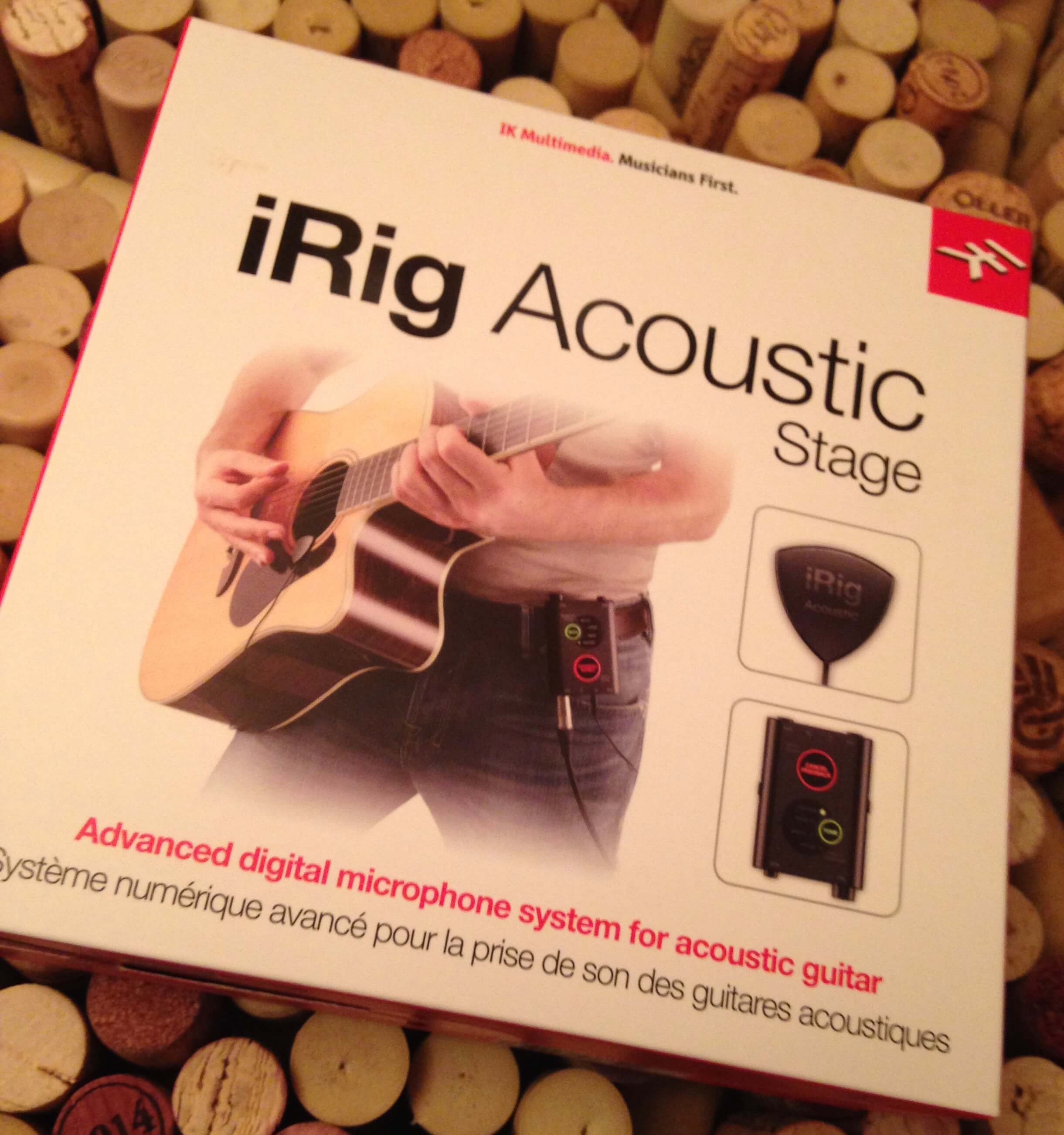In the “take no prisoners” world of open mics, songwriter rounds and blazing fast stage turnovers you’d best be prepared to hand the sound tech one single input that’s “good to go” (with a little signal processing beyond an instrument’s raw sound) if you expect to get a good mix going in your one song (or micro set).
IK Multimedia’s update to their iRig Acoustic appears to be a really good way to achieve that processed sound and stay on a budget, too. $99 gets you a small device, about the size of a wireless transmitter, that likewise clips onto your strap. This iRAS belt pack houses an input from the iRAS mic, which easily clips onto your guitar (or ukulele, or bass …) at the soundhole, just under the strings. The belt pack also houses a 1/4” input that you feed with your instrument’s 1/4” output (no worries of your instrument is purely acoustic, this input is optional). There’s a blend control to mix/blend these two sources together and even a polarity switch to make sure both inputs are in-phase.
There’s master volume, but more importantly there’s switchable voicing. There are self-explanatory “natural,” “warm” and “bright” settings, along with settings for a nylon-string’ed classical-type guitar. These voicing offer lots of tonal flexibility and YES(!) the nylon settings are different and sonically appropriate. Further, I found you can place the mic under the high or the low strings to achieve your ideal balance.

But there’s one last feature that seals the deal … a panic button, or should I say a feedback cancellation feature. This large button is easy to find, feel and push (even if attached to your strap, or clipped onto your pocket) when that hellish moment of squealing/howling is suddenly encountered.
All of the above make for a very useful live-sound device, but there are studio-centric features as well … like the class-compliant (as in plug ’n play simplicity) USB connection for self-recording. There are even modeling apps available from IKM on-line that further the flexibility and creative voicings.
This is all fine and dandy and the iRAS is nearly ideal for live conveniences, but the system’s tone isn’t as balanced and smooth as nice condenser mic in the studio. That is until I realized, oddly enough, that the iRAS comes shipped calibrated ideally for nylon string guitar via the “Nylon” settings, but the other settings are calibrated for non-guitar instruments! But wait, there’s more … the calibration process is very easy (you play barre chords on various frets), it takes a mere minute to do and yields substantial results. Once calibrated, my Taylor dreadnaught sounded much fuller and smoother; a far better tone for live use and one I could now use in-studio. It gets even better … you can re-calibrate with different strum intensities for different results AND the “Natural/Warm/Bright” settings affect your custom calibration, too.
The negatives are few in comparison … handling noise can be an issue and loud vocals get picked up by the mic a little. The case is plastic and will likely die a bitter death if stepped on.
Maybe so, but at an affordable $99 you get a whole lot of useful technology that can seriously simplify acoustic amplification for studio or stage. This represents a ton of flexibility and personal customization and those very features make it easy to use … or easy to hand the sound tech and know that it’s a lot easier for them to get you sounding good as quickly as possible.
PROS:
easy to use; affordable; great feedback suppression; responsive calibration options.
CONS:
plastic enclosure may not hold up over time; some loud vocal bleed-through possible.
PRICE:
–Rob Tavaglione owns Catalyst Recording in Charlotte NC and is a veteran freelance writer.






